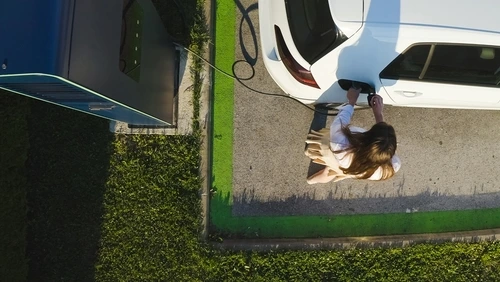
Most drivers in the UK would only need to charge their electric vehicles (EV) once per fortnight, according to a new study into UK car mileage.

The Great Britain MOT Mileage Report conducted by Field Dynamics, which analysed more than 140 million MOT records between 2018 and 2021, found that 57% of cars accumulate less than 100 miles per week per vehicle.
This means that since most EVs have a range above 200 miles per full charge, and many much higher, charges for the average driver would be relatively few and far between.
As well as the implications for the average British driver, these findings could help to inform city planning around support for EVs.
British car mileage and electric vehicles
The Field Dynamics report studied the mileage of cars registered for MOTs between 2018 and 2021. It found an overall dip in miles driven year-on-year, which is partly explainable by the pandemic, but the trend continued unabated into 2021.
The data revealed that the vast majority of vehicles (86%) log less than 10,000 miles per year. Perhaps more importantly, 53% of cars travel less than 100 miles per week and 87% less than 200.
The study notes that most EVs have a capacity above 200 miles. In fact, the UK’s most popular EV – the Tesla Model Y – has a full charge capacity of between 283 and 331 miles, meaning that most drivers could go between two and three weeks on a single charge.
Moreover, low-mileage EV drivers may save money on fuel while charging less frequently.
Comparing the Tesla Model Y to the Ford Fiesta – the most popular petrol car in the UK – the cost of a 100-mile charge would equate to £10.03, compared with £12.46 in petrol (each at fuel prices at press time). And while the average petrol car has a much higher mileage capacity than the Model Y’s full charge, most vehicles evidently do not make use of it.
Where in the UK has the highest mileage?
Perhaps unsurprisingly, the north of the UK sees a higher average mileage than the south – 5,616 miles versus 5,231 – which could be due to worse public transport and less dense populations, particularly compared with London.
The areas with the highest mileage were:
- East London – 6,471 miles per year
- Luton – 6,268 miles per year
- Inverness – 6,225 miles per year
- Motherwell – 6,203 miles per year
- Galashiels – 6,181 miles per year
Whereas the lowest mileage areas were:
- Bournemouth – 4,722 miles per year
- South-west London – 4,607 miles per year
- Kingston Upon Thames – 4,550 miles per year
- Sutton – 4,464 miles per year
- Bromley – 4,385 miles per year
Interestingly, London areas feature as the highest and second-lowest mileage in the country, which complicates the intuitive assumption that EVs may benefit city drivers more.
Even so, the mileage by area combined with the low mileage in the majority of cars serves as useful context for local authorities planning for the future uptake of electric vehicles, as well as the trends in their use.
[Read more: Where in the UK are electric vehicles most popular?]






